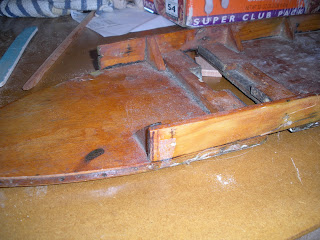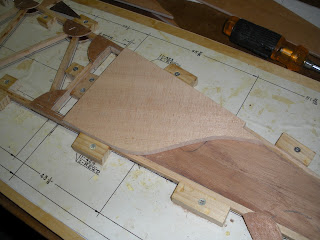Drawing has dotted lines. . . ?
The drawing has a set of parallel lines that was confusing for weeks (actually, it was probably months). According to Draftese, dotted lines means a hidden line, which means something is behind something and out of sight. Last week the guys had a brainstorming session and figured out that the something was, and realized it was a reinforcement strip on the back of the rib. They then fabricated the strip and glued it in place as you can see in the photo above.
Chef Joe set up a production line for sandwiches at yesterdays work day.
I took this photo for John (in the middle, Dick on the left, Leo on the right). The photo will be used in an article that John is writing for the Martin Museum Newsletter.

















